Today we will be looking at everything that is left in the set: Mana and utility cards. Mana is easy to define: is it a land? Does it produce some kind of mana? Done. Utility is somewhat more fluid. Utility expands the functionality of your deck. Adding resources, adding new angles of attack, engines, etc.
This is the home stretch so let's get right to it.
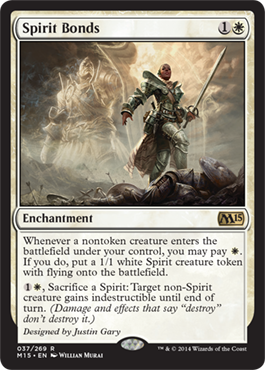 This is a cheap, reliable token generator that simultaneously grants you some partial protection from board sweepers. If that sounds pretty awesome...well that is because it is awesome. The only hiccup I can see is that it requires a small amount of mana every time you want to do anything. If you just pay the casting cost, you are never going to get anything out of this. To maximize the value from this card, you have to set back your curve by an entire turn and be conscious about leaving up mana to protect your Creatures from being destroyed. That can be a tall order in a format full of mana hungry decks.
This is a cheap, reliable token generator that simultaneously grants you some partial protection from board sweepers. If that sounds pretty awesome...well that is because it is awesome. The only hiccup I can see is that it requires a small amount of mana every time you want to do anything. If you just pay the casting cost, you are never going to get anything out of this. To maximize the value from this card, you have to set back your curve by an entire turn and be conscious about leaving up mana to protect your Creatures from being destroyed. That can be a tall order in a format full of mana hungry decks.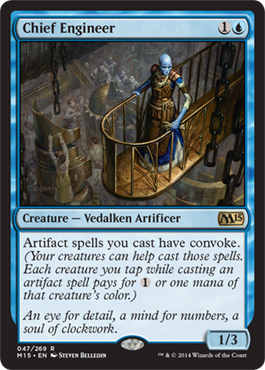 I am not going to lie to you. I don't know how this is going to work. I didn't think much of Grand Architect, but it turned out to be very complex. In certain decks it can generate truly unfair amounts of mana, which puts opposing players in an awkward situation. Do they kill it? How do I know whether or not it is going to be good in this particular game?
I am not going to lie to you. I don't know how this is going to work. I didn't think much of Grand Architect, but it turned out to be very complex. In certain decks it can generate truly unfair amounts of mana, which puts opposing players in an awkward situation. Do they kill it? How do I know whether or not it is going to be good in this particular game?Now, with that in mind: Chief Engineer is less explosive. It doesn't generate as much mana per Creature. This is balanced by the fact that you can use any and all of your Creatures for mana. So I would guess that this is somewhat worse than Grand Architect, but still worth looking into.
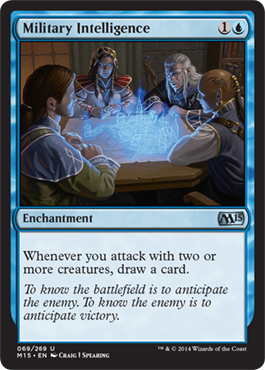 As a draw engine, this doesn't seem very powerful. It is easy to disrupt with removal and all but folds to board sweepers. That being said, it is cheap and doesn't have to net you too many cards in order to feel like your investment paid off.
As a draw engine, this doesn't seem very powerful. It is easy to disrupt with removal and all but folds to board sweepers. That being said, it is cheap and doesn't have to net you too many cards in order to feel like your investment paid off.I don't necessarily see this being the most useful in a mono Blue linear strategy. Instead, I see uses for this in aggro-control decks like Edric. Bant based token swarm decks may also have a spot for this. I think this is worth trying out, but I wouldn't be surprised if it ends up getting cut for something better.
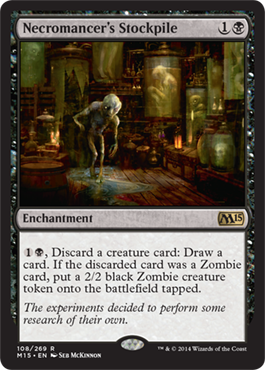 This is an engine that I can get behind. You basically get to cycle all of your Creature cards, setting yourself up for a reanimation effect later in the game. If you commit yourself to a Zombie theme, you can net a free 2/2 every time you do this, which is an awesome bonus! I have been itching to see a Rooftop Storm deck...I might just have to build one.
This is an engine that I can get behind. You basically get to cycle all of your Creature cards, setting yourself up for a reanimation effect later in the game. If you commit yourself to a Zombie theme, you can net a free 2/2 every time you do this, which is an awesome bonus! I have been itching to see a Rooftop Storm deck...I might just have to build one.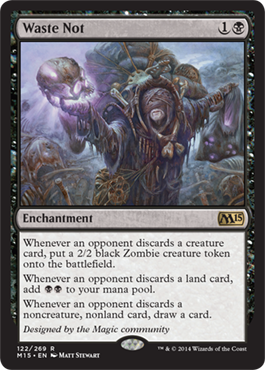 Waste Not is certainly very powerful. There are easy and profitable ways to get your opponents to discard their cards. Some strategies even want to be discarding by default.
Waste Not is certainly very powerful. There are easy and profitable ways to get your opponents to discard their cards. Some strategies even want to be discarding by default.No matter what they pitch you get some kind of value, but the key to making this card successful is going to be how you leverage the second ability. Many players are going to want to discard lands so that they can hold onto their action spells, but if you have some sort of mana sink like say, a Scepter of Fugue, then you can really put that extra mana to a good use.
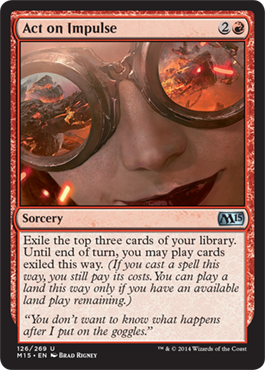 I am really happy to see that Red has been getting more equal treatment in recent years. However, finding ways to create card advantage and card selection that 'feel' Red isn't always easy. Unfortunately, this paradigm of 'use it or lose it' card draw doesn't fit well in Commander. The format revolves around high impact plays and so many of those crucial, game-winning cards are quite expensive. That means that you are going to need 10+ mana in order to regularly be able to generate card advantage out of this. Maybe that is reasonable. Maybe that is asking too much.
I am really happy to see that Red has been getting more equal treatment in recent years. However, finding ways to create card advantage and card selection that 'feel' Red isn't always easy. Unfortunately, this paradigm of 'use it or lose it' card draw doesn't fit well in Commander. The format revolves around high impact plays and so many of those crucial, game-winning cards are quite expensive. That means that you are going to need 10+ mana in order to regularly be able to generate card advantage out of this. Maybe that is reasonable. Maybe that is asking too much.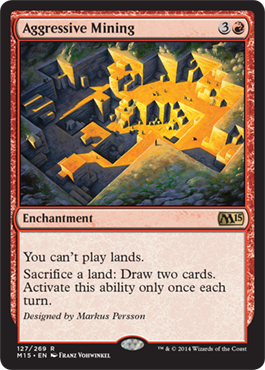 Speaking of Red and card advantage...and also about needing a lot of lands in order to eek out some semblance of value...Why does this say that you can't play lands? This was close to becoming one of the top Red cards in the format. However, the particulars of the wording make it such that this card is going to be difficult to use. Unfortunately, I think that this has one safety valve too many.
Speaking of Red and card advantage...and also about needing a lot of lands in order to eek out some semblance of value...Why does this say that you can't play lands? This was close to becoming one of the top Red cards in the format. However, the particulars of the wording make it such that this card is going to be difficult to use. Unfortunately, I think that this has one safety valve too many.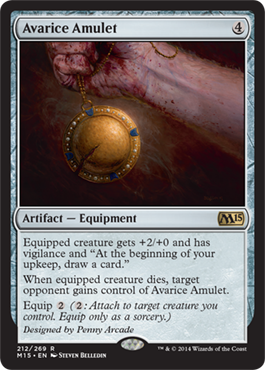 This doesn't feel like a piece of equipment to me. You draw the cards as an upkeep trigger, not a attack or combat damage trigger? That is somewhat unique, but not entirely a good thing. You have to equip it and then wait through your opponent's whole turn hoping that they don't kill your Creature.
This doesn't feel like a piece of equipment to me. You draw the cards as an upkeep trigger, not a attack or combat damage trigger? That is somewhat unique, but not entirely a good thing. You have to equip it and then wait through your opponent's whole turn hoping that they don't kill your Creature.This card will create an interesting interplay in deckbuilding because you want to be certain that you have more removal than your opponent, but you also need to find room for the Creature to put this on.
I can't hate on this too hard because I am die hard fan of Penny Arcade. I have been reading it since the beginning and I won't stop until they do. However, having seen them play Magic, they are definitely funny...
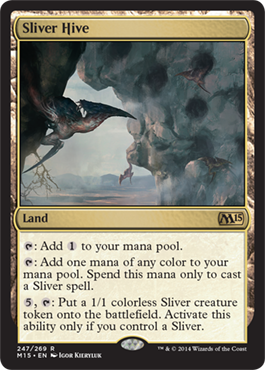 Well, we made it to the final card. I was so close to making it through a set review without going on some sort of rant about bad decisions by the creative team. We both know I can't miss an opportunity like this though. Begin rant:
Well, we made it to the final card. I was so close to making it through a set review without going on some sort of rant about bad decisions by the creative team. We both know I can't miss an opportunity like this though. Begin rant:The line we were given to justify changing the look of slivers was that they were too difficult to differentiate in art. They all just looked like a sliver doing a thing, instead of a sliver that COULD do a thing. Or whatever.
My first problem with this is: if that were true, how does making them look like the Predator solve that? The 2014 slivers all looked the same too. I never looked at the art on a sliver card and thought to myself 'wow, that humanoid body shape really helped convey they differences between this sliver and EVERY OTHER ONE THAT LOOKED LIKE IT!'
This would be a problem, but the point of slivers is that each one adds something to the collective, resulting in them all being IDENTICAL. They are supposed to look alike, right? They literally make each other more similar. I guess the main takeaway we are getting from this sliver fiasco is that slivers can be anything they want to be when they grow up...including the same thing they always were.
Thanks to the design team for press fitting in an overused hook into a set that was already overflowing with hooks. I am not sure whether this is the best core set ever or the worst, but it has accomplished some very important goals:
- It provides a stable footing for new players to learn the game. Using a simplified rules set and obvious references to the previous core sets in Aaron Forsythe's tenure as head of R&D (M10 and forward), Wizards has created a pristine environment for learning and exploration within the game.
- It resonates with long time players by calling back to popular mechanics and themes that veterans can appreciate.
- It successfully launches a merger between the Pro Tour and the release of core sets. This set is complex and interesting enough for us to WANT to watch the pros play it, and it should provide a great show.
- M15 adds a wealth of new, highly competitve cards. The power level of the set is quite high, ensuring that players who invest heavily in this set will be able to use their cards, even at top level tournaments.
- Lastly, and perhaps most importantly for the designers, this set has MASS appeal and is going to sell like hot cakes. I wouldn't be too surprised to find out that this was the highest selling core set of all time. The marketing tie-ins were all there: Pro Tour exposure, slivers, high-profile cycles, the Garruk ad campaign, Duels of the Planeswalkers, outside designers, You Make the Card, and the return of pain lands! This set has just about everything that you could want and it caps off a summer that has been absolutely huge for the game.
That is all for us here at TGZ. Magic 2015 is sweet. No doubt about it. The time has come to stop talking about the cards and start playing with them. If you attended prerelease events in your area, you have already gotten your hands on the set.
As always, we appreciate your support and your feedback, so feel free to drop us a line in the comments to talk about the cards, the review, the future, or anything else.
-GG

No comments:
Post a Comment